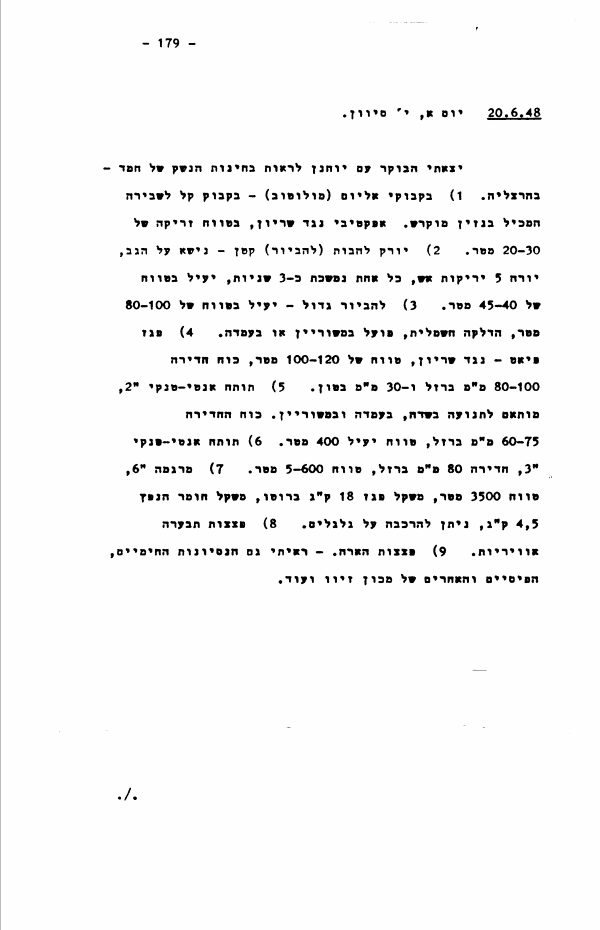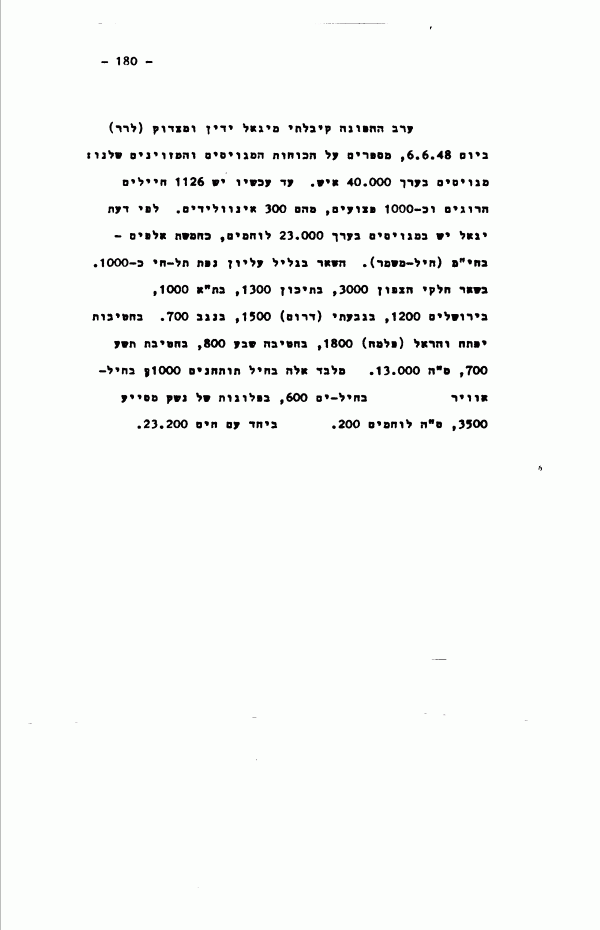1
of
Places:
Jerusalem
Tel Hai
The use of the photograph is subject to the Copyright Law, 2007
19.06.1948
221946
Sunday, June 20, 1948 This morning I went with Yohanan [Ratner] to see the Science Corps weapons testing - in Herzliya: 1) Ilyov (Molotov) cocktails - an easily breakable bottle containing solidified gasoline. Effective against armored [vehicles] within a throwing range of 20-30 m. 2) A small flamethrower - carried on one's back, fires 5 incendiary shots, each lasting about 3 seconds, effective within a range of 40-50 m. 3) A large flamethrower - effective within a range of 80-100 m, electric ignition, operates in an armored [vehicle] or from a [stationary] position. 4) PIAT shell - anti-armor, range of 100-120 m. Penetrating force 80-100 mm iron and 30 cm concrete. 5) 2" anti-tank cannon, adapted to battlefield mobility, [stationary] position, and armored [vehicle]. Penetration force 60-75 mm iron, effective range 400 m. 6) 3" anti-tank cannon, penetration 80 mm iron, range 500-600 m. 7) 6" mortar, range 3,500 m. Shell weight 18 kg gross, explosive weight 4.5 kg, wheel mountable. 8) Aerial incendiary bombs. 9) Illumination bombs. I also saw the tests - chemical, physical, and others - by the Sieff Institute and others. Before the truce, on June 6, 1948, I received the figures on our enlisted and armed forces from Yigael Yadin and Zadok (Lehrer): Conscripts [-] about 40,000. To date we have 1,126 soldiers killed and about 1,000 wounded, of whom 300 are invalids. In Yigael's opinion, the conscripts include 23,000 fighters, about five thousand - in garrison forces. The rest in the Upper Galilee Tel Hai subdistrict about 1,000. In other parts of the north 3,000, in the center 1,300, in Tel Aviv 1,000, in Jerusalem 1,200, in Givati (south) 1,500, in the Negev 700. In the Yiftah and Harel (Palmach) brigades 1,800, in the 7th Brigade 800, in the 9th Brigade 700, in total 13,000. Aside from these, in artillery corps 1,000, in the air force [?], in the navy 600, in auxiliary weapons companies 3,500, total number of fighters 200 [?]. Together with the garrison force 23,200. Contact us










